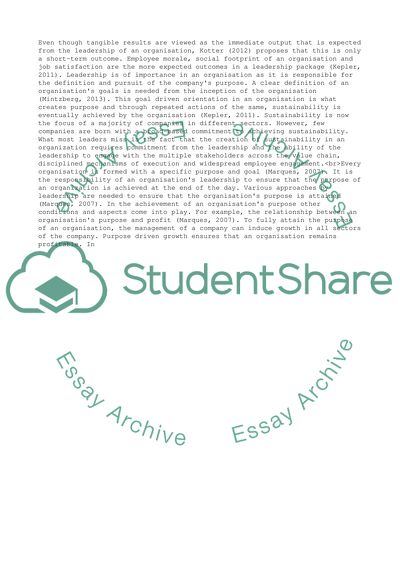Cite this document
(Leadership & Sustainability - What approaches to leadership enable Essay, n.d.)
Leadership & Sustainability - What approaches to leadership enable Essay. https://studentshare.org/management/1817135-leadership-sustainability-what-approaches-to-leadership-enable-organisations-to-address-issues-of-purpose-and-sustainability-draw-from-theory-your-personal-experience-and-published-case-studies-to-develop-your-argument
Leadership & Sustainability - What approaches to leadership enable Essay. https://studentshare.org/management/1817135-leadership-sustainability-what-approaches-to-leadership-enable-organisations-to-address-issues-of-purpose-and-sustainability-draw-from-theory-your-personal-experience-and-published-case-studies-to-develop-your-argument
(Leadership & Sustainability - What Approaches to Leadership Enable Essay)
Leadership & Sustainability - What Approaches to Leadership Enable Essay. https://studentshare.org/management/1817135-leadership-sustainability-what-approaches-to-leadership-enable-organisations-to-address-issues-of-purpose-and-sustainability-draw-from-theory-your-personal-experience-and-published-case-studies-to-develop-your-argument.
Leadership & Sustainability - What Approaches to Leadership Enable Essay. https://studentshare.org/management/1817135-leadership-sustainability-what-approaches-to-leadership-enable-organisations-to-address-issues-of-purpose-and-sustainability-draw-from-theory-your-personal-experience-and-published-case-studies-to-develop-your-argument.
“Leadership & Sustainability - What Approaches to Leadership Enable Essay”. https://studentshare.org/management/1817135-leadership-sustainability-what-approaches-to-leadership-enable-organisations-to-address-issues-of-purpose-and-sustainability-draw-from-theory-your-personal-experience-and-published-case-studies-to-develop-your-argument.


